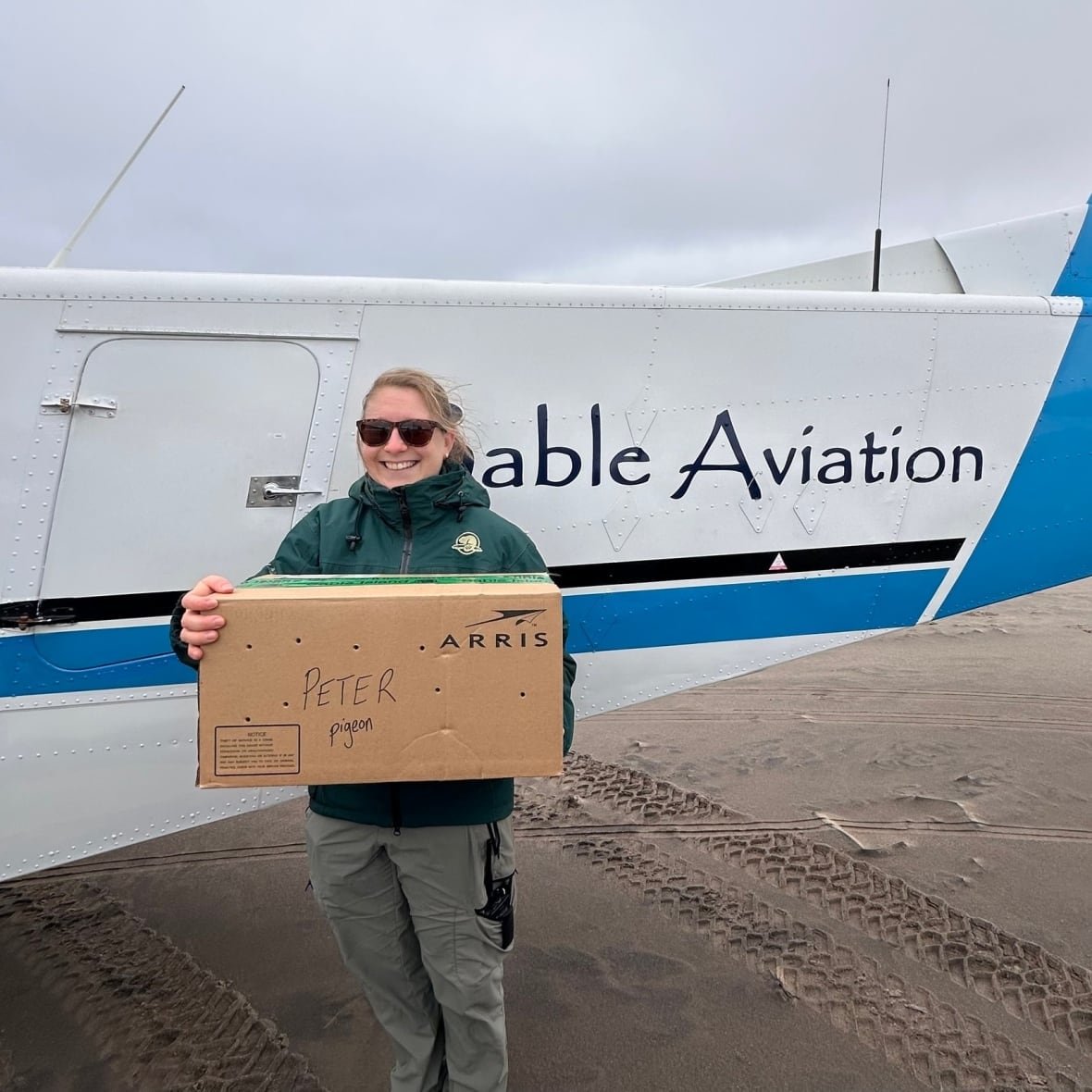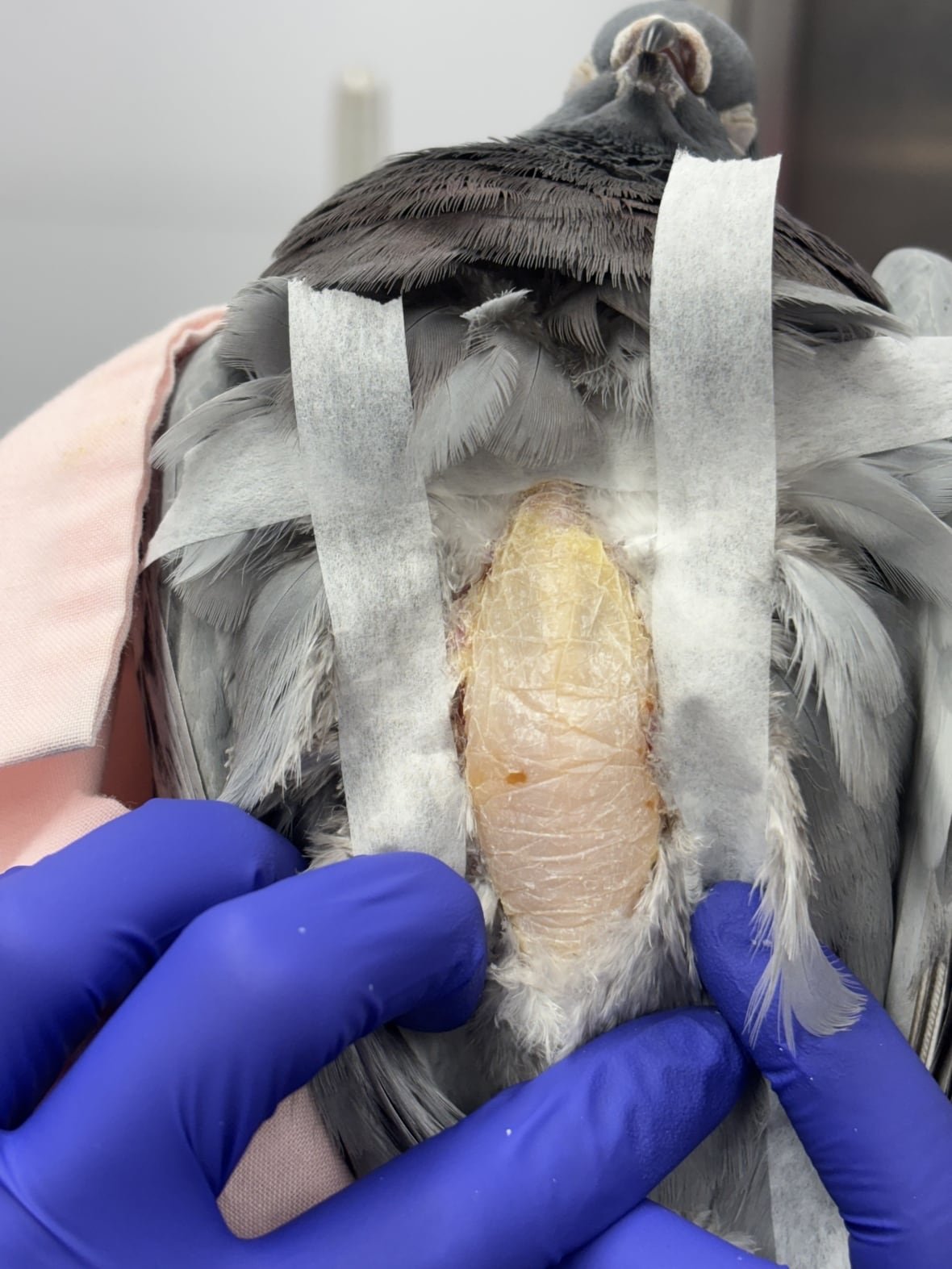When a Spanish fancier released his eight-month-old pigeon for its very first race, the plan was for it to fly to Majorca from Ibiza, approximately 120 kilometres over the Mediterranean Sea.
Instead, the bird ended up some 5,000 kilometres across the Atlantic Ocean on Sable Island, a remote sandbar off Nova Scotia.
David Fernández said the competition began Feb. 22 when hundreds of messenger pigeons were released from a truck on the Spanish island of Ibiza, including pigeon No. 9,550.
But when it didn’t get back to its dovecote — a structure that houses pigeons — after a few hours, he feared it might have been attacked by a bird of prey.
“You don’t expect it to be on the other side of the world,” said Fernández in Spanish.
Pigeon racing is an old sport that involves raising and training messenger pigeons to return to their homes over a specific distance, measuring the average flight speed.

Kristina Penn is used to all sorts of wildlife living on Sable Island: hundreds of wild horses, thousands of seals and numerous seabirds.
But when a fellow Parks Canada employee told her they found a pigeon in late March, Penn was immediately curious about how it got there.
Pigeons don’t typically visit Sable Island, which is located about 290 kilometres southeast of Halifax. Penn could only recall one other time it happened, when a racing pigeon from the U.S. ended up on the island in 2017.
She quickly found out this pigeon had come from much farther away. Thanks to a leg brace on the bird, which had an identification number and the year it was born, Penn discovered the pigeon belonged to a fancier in the Balearic Islands.

Penn’s theory is that at some point during its race, No. 9,550 decided to rest on a cargo ship and hitched a ride across the Atlantic.
In its early days on Sable Island, Penn said the bird did not attempt to fly or move much at all.
“Over a couple of days of looking after the pigeon, it did start hopping around, and we built a little perch for it and it got up on a perch. It also started spreading its wings,” she said.
After caring for him for a week, Peter — as the bird was named by another Parks Canada employee — was placed in a cardboard box and flown to a wildlife rehabilitation centre in mainland Nova Scotia.
Brianna Bowes, a wildlife care specialist at Hope for Wildlife, said she immediately knew the small bird needed help when it arrived at the centre.
“He was thin, obviously hadn’t been eating, was dehydrated. On closer inspection, we realized he did have a wound,” she said. “We also ran some diagnostic testing on him and discovered that he had a gastrointestinal parasite called coccidia.”
She said in the few weeks Peter has been at the centre, the pigeon has recovered a lot and gained some weight.

Two months after setting his pigeon free, Fernández said he received an email from the Spanish Colombophile Federation, a non-profit pigeon sport association, informing him that the bird had made it all the way to Sable Island.
He said it was a great relief to know the pigeon was welcomed in Canada and was being well cared for.
Fernández said he is open to letting the pigeon stay at Hope for Wildlife or bringing him back to Spain — whatever is best for the bird.

Peter, he added, is a good name for the little adventurer.
“We don’t typically name pigeons unless they have a big accomplishment,” said Fernández. “And making it that far is a big accomplishment.”


